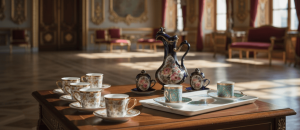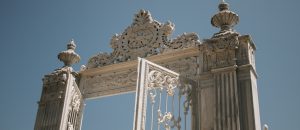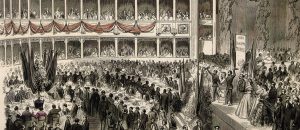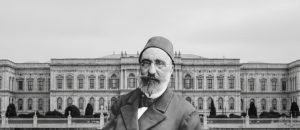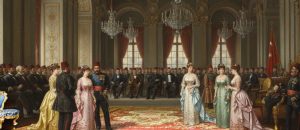For many who visit Istanbul, Topkapı Palace represents the pinnacle, power, and mystery of the Ottoman Empire. However, when you step into Dolmabahçe Palace, you realize you have entered a completely different world. If you have seen Topkapı, you hold a perfect comparison key for understanding Dolmabahçe. Dolmabahçe is almost the exact opposite of everything Topkapı represents, and these contrasts are the best way to understand how an empire changed its shell over 400 years, adopting a Western identity in order to survive. This guide will help you decode the spirit and meaning of Dolmabahçe using your Topkapı experience.
1. Start with the Architecture: Labyrinth vs. Wholeness
What You See in Topkapı: An organic and introverted structure, like a labyrinth, consisting of small and large pavilions with low ceilings, connected by courtyards. It is difficult to understand where the Palace begins and where it ends.
What You Will Understand in Dolmabahçe: An extroverted and holistic structure with perfect symmetry, rising as a single monumental mass. The Palace presents itself to the Bosphorus like a display window.
What Does It Mean?: This is the architectural expression of the transition from a scattered and multi-centered feudal empire structure to a modern and rational state governed from a single center. Topkapı is a fortress-city; Dolmabahçe is a European palace.
2. Look at the Walls: Tile vs. Canvas Painting
What You See in Topkapı: Magnificent Iznik tiles in blue and turquoise tones, covering the walls, featuring thousands of handmade, geometric, and floral patterns. Art is abstract and part of the architecture.
What You Will Understand in Dolmabahçe: Hundreds of canvas paintings, replacing the tiles, hanging in huge, gold-leaf frames. These paintings depict landscapes, portraits, and historical events made by palace painters in a realistic language.
What Does It Mean?: This is a revolution in art and worldview. It is a transition from a symbolic and internal narrative language (tile and miniature) to a realistic understanding (canvas painting), which aims to depict the world as it is, acting as “a window opening to the outside.”
3. Imagine the Seating Style: Divan vs. Armchair
What You See in Topkapı: Low divans (sedir) lined with cushions and pillows, surrounding the edges of the rooms. Life is close to the ground and community (communal) oriented.
What You Will Understand in Dolmabahçe: High, carved, and individual armchairs, sofas, and chairs filling the center of the room. Life is raised off the floor and individual-focused.
What Does It Mean?: This is one of the deepest transformations in lifestyle. It symbolizes a shift from a traditional, flexible, and communal lifestyle to a more formal, individual, and European-standard social structure.
4. Compare the Harem: Cage vs. Window
What You See in Topkapı: A Harem completely isolated from the outside world, facing interior courtyards, with wooden lattices (kafes) on the windows. Privacy means absolute isolation.
What You Will Understand in Dolmabahçe: A Harem with enormous windows overlooking the Bosphorus, possessing the most beautiful view in the Palace. There are no lattices on the windows, only tulle curtains.
What Does It Mean?: This is the clearest indicator of the changing role of the Harem and the woman. Women are no longer completely hidden from the world; they are moving into a position where they observe the world. Privacy transforms into controlled visibility.
5. Question the Center of Power: Palace vs. Bureaucracy
What You See in Topkapı: An absolute center where all the power of the empire is concentrated, from the Imperial Council (Divan-ı Hümayun) to the Sultan’s private chamber. The Sultan is the owner of everything.
What You Will Understand in Dolmabahçe: A magnificent place whose political power gradually decreased. The real power shifted to the Grand Viziers and Pashas in the Sublime Porte (Bâb-ı Âli, the government), and later to political committees such as the Committee of Union and Progress (İttihat ve Terakki).
What Does It Mean?: Dolmabahçe witnessed the painful process of transition from an empire based on the Sultan’s personal authority to a modern state based on institutions and bureaucracy. The Palace gradually transformed from an administrative center into a ceremonial space.
The Evolution of an Empire
Topkapı Palace represents a unique, introverted, global empire at the peak of its power. Dolmabahçe Palace, on the other hand, is the story of an empire trying to adapt to a changing world, adopting a Western identity to survive—an empire that is extroverted but simultaneously suffering from internal turmoil. Reading Dolmabahçe through these contrasts after having seen Topkapı is the most effective way to understand how the mind and spirit of an empire evolved.








